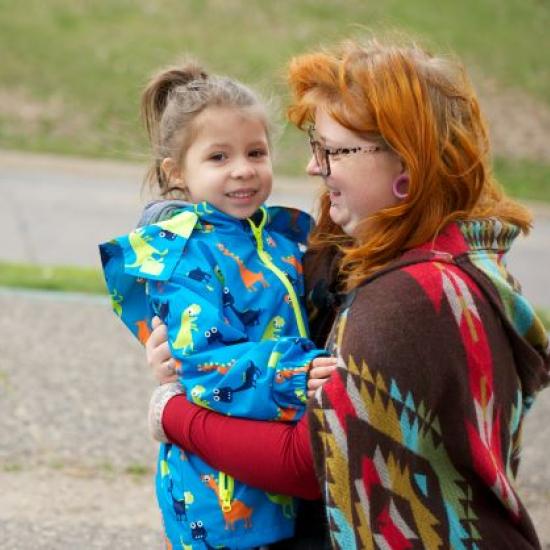7 Things to Know About the Minnesota Homeless Study
In October 2023, Wilder Research will partner with state agencies, regional planning entities, tribes, housing service providers, and volunteers across the state to interview thousands of people experiencing homelessness as part of the next Minnesota Homeless Study.
While some of the study’s logistics will look different than in past years, we believe it is more important than ever to shine a light on homelessness in Minnesota. Since the last study took place in 2018, two major events have rocked our communities – the COVID-19 pandemic and the murder of George Floyd by a Minneapolis police officer.
The pandemic presented unique challenges for people experiencing homelessness. Early in the pandemic, the state of Minnesota issued stay-at-home and social distancing orders, which are nearly impossible to follow if you don’t have a place to call home. Schools, often a source of basic resources for families experiencing homelessness, were forced to close. Unemployment increased sharply in early 2020 and only recently began to return to pre-pandemic levels. Minneapolis also saw an impact on its unsheltered homeless population in summer 2020, after the murder of George Floyd and resulting civil unrest.
Our communities will be feeling the impact of these events for years to come. It is a unique and difficult moment in our history, but we will be better prepared to meet its challenges with a clear and accurate information.
Here are seven things to know about the Minnesota Homeless Study.
1. Wilder Research has conducted the study every 3 years since 1991.
See the results of the first statewide study of homelessness.
2. It is the most comprehensive source of descriptive information on homelessness in Minnesota.
The historical nature of the study allows us to look at trends over time, and the breadth and depth of the study (through thousands of face-to-face interviews) allows us to look more closely at the experiences of the homeless population and to pinpoint barriers to obtaining safe and stable housing. Many organizations and government agencies rely on the Minnesota Homeless Study to identify and address systemic issues; guide services, programs, and policies to support people experiencing homelessness; and track progress in efforts to reduce and ultimately eliminate homelessness in Minnesota.
Other important data sources that complement our understanding of homelessness in Minnesota include:
- An annual point in time (PIT) count of “sheltered and unsheltered homeless persons on a single night during the last ten days in January,” required by the U.S. Department of Housing and Urban Development
- The Homeless Management Information System (HMIS), which includes client information compiled by all providers of federal and state funded supportive housing and emergency shelters
3. A companion study examines homelessness on Minnesota’s American Indian reservations.
Since 2006, Wilder Research has partnered with six American Indian tribes, to conduct a companion study of homelessness on reservations. Unlike our statewide study, the reservation study includes interviews with individuals experiencing near-homelessness – that is, people who are “doubled up” with friends or family because they have no other housing.
Wilder Research honors tribal sovereignty and the rights of each tribe to determine how their study results and data about their tribal members will be used. Each tribe is the sole owner of its own data, and Wilder Research provides support to the tribes to use the data for policy and planning purposes.
4. Study partners help conduct over 4,000 face-to-face interviews with adults and unaccompanied youth experiencing homelessness.
Wilder Research works with hundreds of nonprofit organizations, service providers, state agencies, homeless advocates, and volunteer interviewers to gather critical data on homelessness. Interviewers are trained in conducting face-to-face interviews with people experiencing homelessness; and anyone who completes a survey receives cash compensation for their time.
Historically, volunteer interviewers have included individuals and self-organized groups from community churches, nursing and social work programs, colleges, corporations, and foundations.
5. The study takes place at over 300 locations across Minnesota.
A goal of the study is to reach as many people experiencing homelessness as possible. Wilder partners with services providers and homeless outreach workers to conduct interviews at over 300 locations across Minnesota, including emergency shelters, domestic violence shelters, transitional housing programs, as well as non-shelter locations (e.g., drop-in service locations, encampments, malls, transit stops).
6. Funding for the study comes from a mix of public and private entities.
Previous study funders have included the Minnesota Department of Human Services, the Minnesota Housing Finance Agency, the Greater Minnesota Housing Fund, and many other government and philanthropic organizations. While the Minnesota Homeless Study is often known for happening on “one night in October,” the work itself takes roughly three years to complete – from planning to reporting and communicating the results. Valuable funding helps us to produce detailed data about every region of the state, as well as reports with deeper analyses about specific populations experiencing homelessness, including older adults, veterans, families, and youth.
7. These data are powerful and can be used by anyone.
Minnesota Homeless Study data are available and free for public use at mnhomeless.org. There, you can find published reports and fact sheets, as well as detailed data table.
- Find detailed data from the study to inform your work
- Sign up to receive email updates including ways to get involved with the study and study results
- Listen to the podcast Minnesota's Unsheltered Homeless: Understanding Who's Affected

